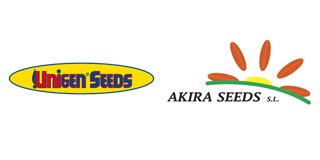
UNIGEN SEEDS SPAIN
Effects of Postharvest Curing, Ozone, Sulfur Dioxide, or Low Oxygen/High Carbon Dioxide Storage Atmospheres on Quality of Short-day Onions
Vidalia onions (Allium cepa) are a branded product of southeastern Georgia marketed under a federal marketing order. They are short-day, yellow onions with a Granex shape that are susceptible to a number of diseases postharvest, limiting the amount of time they can be marketed. Postharvest treatments and storage methods can
16 July, 2021
Vidalia onions (Allium cepa) are a branded product of southeastern Georgia marketed under a federal marketing order. They are short-day, yellow onions with a Granex shape that are susceptible to a number of diseases postharvest, limiting the amount of time they can be marketed. Postharvest treatments and storage methods can help extend their marketability. Thus, the objective of this study was to evaluate these postharvest treatments and storage conditions on quality of three Vidalia onion varieties: ?WI-129?, ?Sapelo Sweet?, and ?Caramelo?. All varieties were undercut, then either - harvested immediately (zero cure), - field cured (2 days), or - forced-air heat cured (3 days at ?37 ?C) when judged mature. ?WI-129?, ?Sapelo Sweet?, and ?Caramelo? represent early, midseason, and late varieties, respectively. Bulbs were then sorted and stored in - refrigerated storage [0?1 ?C, 70% relative humidity (RH)], - sulfur dioxide (SO2) (1000 mg?L?1 in 2010 and 5000 mg?L?1 in 2011, one time fumigation) followed by refrigeration, - ozone (O3 (0.1?10 mg?L?1; continuous exposure, 0?1 ?C, 70% RH), or - controlled-atmosphere storage [3% oxygen (O2), 5% carbon dioxide (CO2), 0?1 ?C, 70% RH]. After 2 and 4 months, bulbs were removed from storage, and evaluated after 1 and 14 days for quality and incidence of disorders. ?Caramelo? had the lowest percent marketable onions after curing in 2010, while ?WI-128? had the lowest percent marketable onions in 2011. There was a rain event immediately before harvesting ?Caramelo? that may have contributed to low marketability in 2010. Heat curing improved marketability for ?Sapelo Sweet? and ?WI-129? in 2010 compared with no curing. In 2011, heat curing resulted in more marketable onions for ?Sapelo Sweet? compared with no curing. Curing had no effect on ?Caramelo? in 2011 and field curing had the greatest percent marketable onions for ?WI-129? in 2011. In 2010, controlled-atmosphere storage had more marketable onions compared with SO2 for ?Caramelo? and was better than simple refrigeration or O3 with ?WI-129?. In 2011 refrigeration, controlled-atmosphere storage, and O3 were all better than SO2 with ?Caramelo?. ?Sapelo Sweet? and ?WI-129?, on the other hand in 2011, had better storage with SO2 compared with other storage methods. Onions stored for 2 months had 32% and 17% more marketable onions after removal compared with 4 months of storage regardless of storage conditions for 2010 and 2011, respectively. Poststorage shelf life was reduced by about one-third, 14 days after removal from storage regardless of the storage conditions.SourcesEffects of Postharvest Curing, Ozone, Sulfur Dioxide, or Low Oxygen/High Carbon Dioxide Storage Atmospheres on Quality of Short-day OnionsManish K. Bansal1, George E. Boyhan1, and Daniel D. MacLean2 1Department of Horticulture, University of Georgia, 1111 Miller Plant Science Building, Athens, GA 306022Department of Horticulture, University of Georgia, 4604 Research Way, Tifton, GA 31794HortTechnology October 2015Picture by buckhorncreekranch.net








